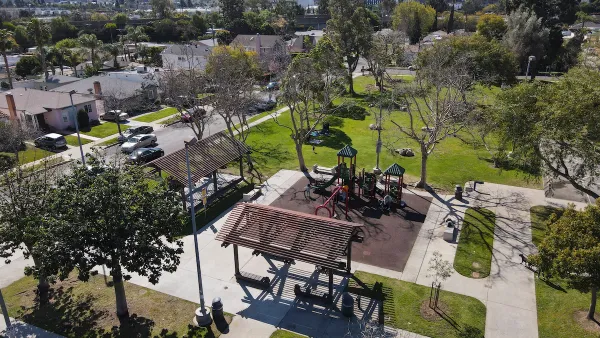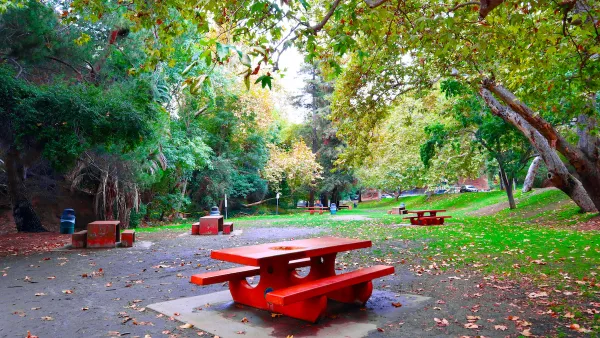Researchers used a machine learning algorithm to analyze over 200 parks in Philadelphia, revealing insights about differences in access to quality parks.

According to a new study from the University of Delaware, park access and quality vary across the city of Philadelphia. Using a machine learning algorithm to analyze 285 parks from over 100,000 park reviews gathered from Google Maps, the study shows that a majority of the parks that are considered to be of high quality are located in areas that are more likely have more affluent, white, and college educated residents. The parks that scored the lowest tend to be in areas where the residents are historically marginalized, including mostly low-income, Black and Latino, with a lower level of educational attainment.
As reported by Adam Thomas, the researchers corroborated the reviews with the physical characteristics of those parks using satellite and aerial imagery, as well as police reports and data from the Philadelphia Parks and Recreation Department. The study was published in Scientific Reports and was led by Matthew Walter, a doctoral student at the University of Delaware. Walter shared that by reading social media reviews of parks from 2011 to 2022 and by examining a large amount of reviews spread across a wide range of parks, he and his fellow researchers were able to see how a large population of Philadelphia was feeling about its urban parks.
Of particular concern to the researchers was that one key demographic group that lacked access to highly rated parks were the ones who needed them the most: young children. In the areas where the census data showed more young children, the park reviews were more likely to mention condition and safety when compared to other topics. This lower perceived park quality for young children raises a concern for childhood health and development.
FULL STORY: Study uses social media and machine learning to show environmental injustices in Philadelphia's urban parks

National Parks Layoffs Will Cause Communities to Lose Billions
Thousands of essential park workers were laid off this week, just before the busy spring break season.

Retro-silient?: America’s First “Eco-burb,” The Woodlands Turns 50
A master-planned community north of Houston offers lessons on green infrastructure and resilient design, but falls short of its founder’s lofty affordability and walkability goals.

Delivering for America Plan Will Downgrade Mail Service in at Least 49.5 Percent of Zip Codes
Republican and Democrat lawmakers criticize the plan for its disproportionate negative impact on rural communities.

Test News Post 1
This is a summary

Test News Headline 46
Test for the image on the front page.

Balancing Bombs and Butterflies: How the National Guard Protects a Rare Species
The National Guard at Fort Indiantown Gap uses GIS technology and land management strategies to balance military training with conservation efforts, ensuring the survival of the rare eastern regal fritillary butterfly.
Urban Design for Planners 1: Software Tools
This six-course series explores essential urban design concepts using open source software and equips planners with the tools they need to participate fully in the urban design process.
Planning for Universal Design
Learn the tools for implementing Universal Design in planning regulations.
EMC Planning Group, Inc.
Planetizen
Planetizen
Mpact (formerly Rail~Volution)
Great Falls Development Authority, Inc.
HUDs Office of Policy Development and Research
NYU Wagner Graduate School of Public Service





























